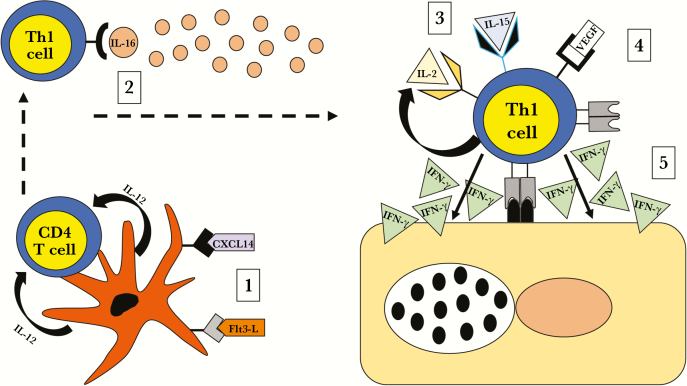Figure 1.
Potential roles for protective cytokines against chlamydial ascension and reinfection. (1) Dendritic cells are recruited and activated by CXCL14 and FMS-like tyrosine kinase 3 ligand (Flt-3L) in the cervix. (2) Activated dendritic cells migrate to the draining lymph node where they release interleukin (IL) 12 and present chlamydial antigen to cognate CD4 T cells promoting differentiation of antigen-specific CD4 T-helper (Th) 1 cells. (3) Th1 cells egress from the lymph node into the blood and are chemotactically recruited to the infected cervix by IL-16. (4) IL-16 enhances Th1 responsiveness to IL-2 and IL-15, which promote T-cell survival and accelerate vascular endothelial growth factor (VEGF)–mediated Th1 activation; IL-15 and VEGF costimulation leads to enhanced production of interferon gamma (IFN-γ) by Th1 cells and targeting of chlamydia-infected epithelial cells.

